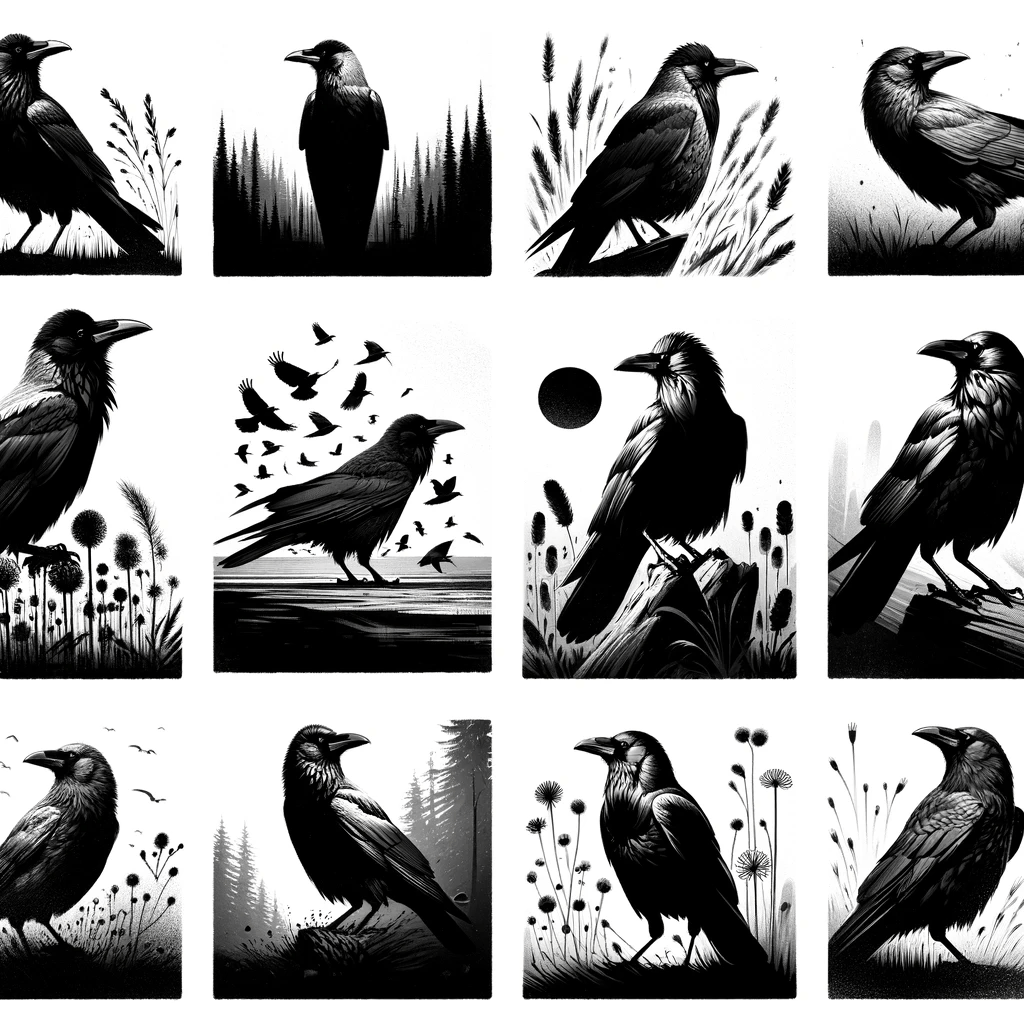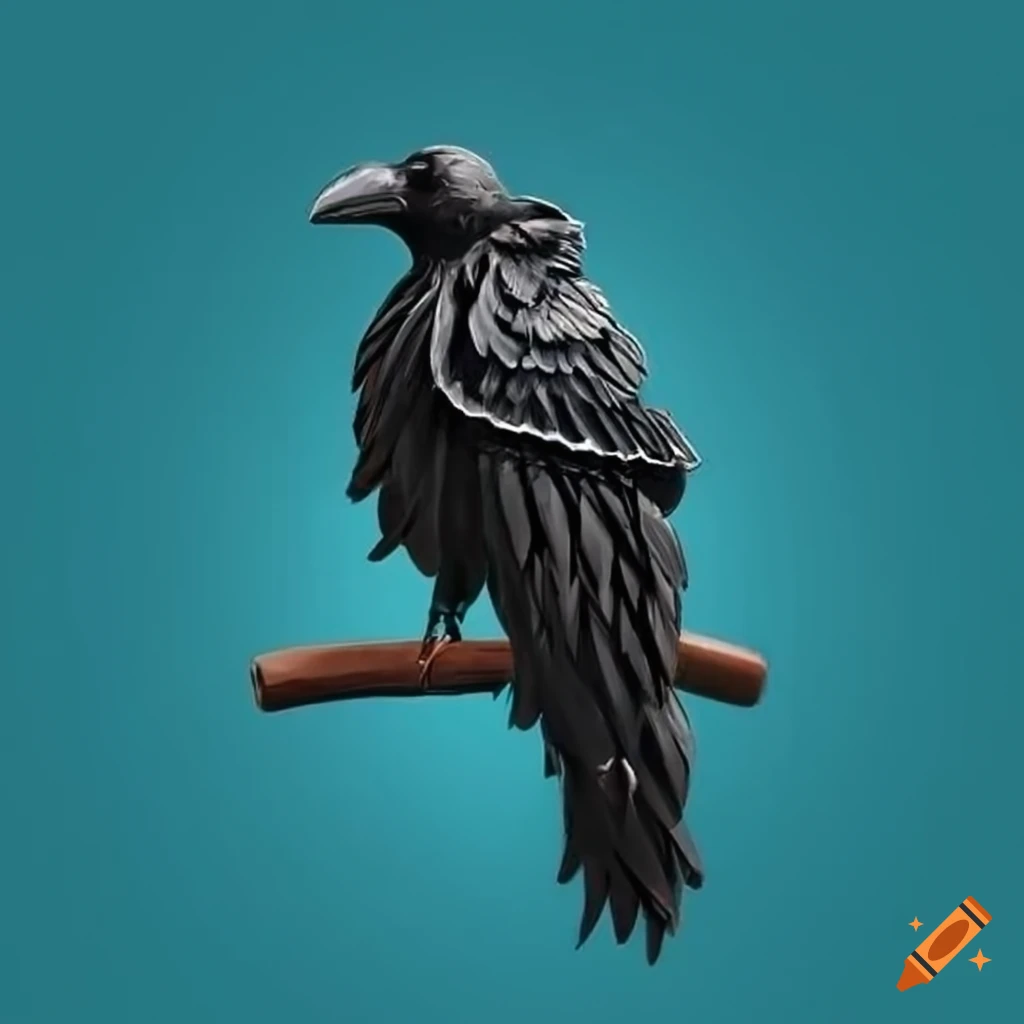The Alluring Grey Crow of New Guinea: Corvus Tristis Explored
December 30, 2023 | by BlackCrow.com

The Enigmatic Grey Crow
The Grey Crow, also known as the Bare-Faced Crow, is a fascinating bird species found in New Guinea and neighboring islands. Let’s take a closer look at this enigmatic bird.
Introducing the Grey Crow
The Grey Crow (Corvus tristis) is a medium-sized bird belonging to the crow family, Corvidae. It has a distinct appearance with a predominantly grey plumage, showcasing shades ranging from pale grey to charcoal grey. The bare skin around its eyes and face adds to its unique charm, giving it its alternative name, the Bare-Faced Crow.
This intelligent bird species exhibits remarkable cognitive abilities and is known for its problem-solving skills. The Grey Crow has adapted well to its natural habitat, displaying behaviors that allow it to thrive in a variety of environments.
Habitat and Distribution of the Grey Crow
The Grey Crow is primarily found in the lush forests and wooded areas of New Guinea and neighboring islands, including the Aru Islands and the Kai Islands. It favors habitats ranging from lowland forests to mountainous regions, where it can find ample food resources and suitable nesting sites.
This species has a relatively restricted distribution, mainly due to its preference for specific ecological conditions. The Grey Crow’s range extends across the countries of Indonesia and Papua New Guinea, making it an endemic bird to this region.
To learn more about other fascinating crow species, such as the Pied Crow or the Little Crow, visit our articles on corvus albus – pied crow (central African coasts to southern Africa) and corvus bennetti – little crow (Australia).
The Grey Crow’s intriguing appearance and its habitat preferences make it a captivating subject for bird enthusiasts and researchers alike. Join us as we delve deeper into the physical characteristics, unique traits, and captivating behaviors of this remarkable bird species.
Appearance and Features
The Grey Crow, also known as the Bare-faced Crow (Corvus tristis), is a fascinating bird found in New Guinea and neighboring islands. This section will explore the physical characteristics and unique traits that make the Grey Crow stand out.
Physical Characteristics of the Grey Crow
The Grey Crow is a medium-sized bird with an average length of about 45 centimeters (17.7 inches) and a wingspan of approximately 90 centimeters (35.4 inches). It has a distinctive appearance that sets it apart from other crow species. Here are some key physical characteristics of the Grey Crow:
-
Feathers: The Grey Crow has predominantly dark grey plumage, with a glossy sheen that adds a touch of elegance to its appearance. The feathers on its head and throat are slightly lighter in color, creating a subtle contrast.
-
Bare Face: One of the most striking features of the Grey Crow is its bare face. The skin on its face is pale bluish-white, devoid of feathers. This unique trait gives the bird a distinctive and intriguing look.
-
Beak: The Grey Crow has a strong, slightly curved beak that is black in color. The beak is well-adapted for various feeding behaviors, allowing the bird to efficiently consume a diverse range of food.
-
Eyes: Its eyes are dark brown and exude intelligence and curiosity. The eyes are set against the pale skin of the face, creating an eye-catching contrast.
-
Legs and Feet: The Grey Crow possesses sturdy black legs and feet, which are well-suited for perching, walking, and foraging on the ground.
Unique Traits of the Grey Crow
In addition to its physical characteristics, the Grey Crow exhibits several unique traits that make it a captivating species. Here are a few notable characteristics:
-
Intelligence: The Grey Crow is known for its high level of intelligence and problem-solving abilities. It has demonstrated impressive cognitive skills, such as tool use and the ability to solve complex puzzles.
-
Vocalizations: Like other crow species, the Grey Crow is a vocal bird. It produces a range of calls, including caws, croaks, and rattling sounds. These vocalizations serve various purposes, including communication with other crows and alerting the flock to potential dangers.
-
Social Behavior: Grey Crows are highly social birds and usually live in small groups or flocks. They engage in cooperative behaviors, such as mobbing predators to protect their territory or offspring.
-
Feeding Habits: The Grey Crow has an omnivorous diet, feeding on a wide variety of food sources. It consumes fruits, seeds, insects, small vertebrates, and even carrion. This adaptability allows the Grey Crow to thrive in diverse habitats.
The Grey Crow’s physical characteristics and unique traits make it an alluring bird to observe and study. Its bare face, coupled with its intelligence and social behavior, sets it apart from other crow species. Stay tuned for more fascinating facts about the Grey Crow in the upcoming sections.
Behavior and Social Structure
Understanding the behavior and social structure of the Grey Crow provides insights into the fascinating lives of these birds.
Feeding Habits of the Grey Crow
The Grey Crow has an omnivorous diet, consuming a variety of food sources. Their diet primarily consists of fruits, seeds, insects, small vertebrates, and carrion. They are opportunistic feeders and are known to scavenge on the remains of larger animals. Additionally, they have been observed stealing food from other bird species. The Grey Crow’s ability to adapt its feeding habits allows it to thrive in diverse environments.
Communication and Vocalizations
Grey Crows are highly vocal birds and use a range of calls and vocalizations to communicate with each other. Their vocal repertoire includes a variety of caws, croaks, and squawks. These calls serve different purposes, such as signaling danger, establishing territory, or attracting mates. The Grey Crow’s vocalizations are an essential part of their social interactions and help maintain communication within their flock.
Social Interactions and Nesting
Grey Crows are social birds and form small to medium-sized flocks. Within these flocks, they exhibit complex social hierarchies. These hierarchies are typically based on dominance and play a role in determining access to resources and breeding opportunities.
During the breeding season, Grey Crows form monogamous pairs. They build nests in tree branches using twigs, leaves, and other materials. Both the male and female contribute to nest construction. The female lays a clutch of eggs, and both parents take turns incubating them. After hatching, both parents participate in feeding and caring for the chicks until they fledge.
Understanding the behavior and social structure of Grey Crows allows us to appreciate their adaptability and their ability to thrive in different environments. Their feeding habits, vocalizations, and social interactions contribute to the rich and complex lives of these remarkable birds.
Conservation Status and Threats
The conservation status of the Grey Crow, also known as the Bare-faced Crow, is a matter of concern. Understanding the challenges it faces and the efforts being made to protect this species is crucial to its survival.
Conservation Status of the Grey Crow
The Grey Crow (Corvus tristis) is classified as “Vulnerable” on the International Union for Conservation of Nature (IUCN) Red List of Threatened Species. This designation is given to species that are at high risk of extinction in the wild. The population of Grey Crows has been declining due to habitat loss and degradation, as well as hunting for food and for their feathers.
Threats to the Grey Crow’s Survival
Several factors contribute to the threats faced by the Grey Crow. The primary threat is the loss and fragmentation of its habitat. Deforestation, conversion of land for agriculture, and logging activities have resulted in the destruction of the Crow’s natural habitat. This loss of suitable nesting and foraging areas significantly impacts the population of the species.
Another significant threat to the Grey Crow is hunting. The Crow is hunted for its meat and feathers, which are used in traditional ceremonies and rituals. Overhunting, especially in certain regions, has had a detrimental impact on the population.
Conservation Efforts and Future Outlook
Efforts are being made to protect and conserve the Grey Crow. These initiatives focus on multiple approaches, including habitat conservation, community engagement, and raising awareness about the importance of conserving this species.
Conservation organizations are working to establish protected areas and promote sustainable land-use practices to safeguard the Crow’s habitat. They are also collaborating with local communities to develop alternative livelihood options that reduce the reliance on hunting the Grey Crow.
Research and monitoring programs are being conducted to gather more information about the Grey Crow’s behavior, population dynamics, and habitat requirements. This knowledge is essential in formulating effective conservation strategies.
While the Grey Crow faces numerous challenges, there is hope for its future. Continued conservation efforts, combined with public awareness and support, can contribute to the recovery and long-term survival of this unique species.
By understanding the conservation status and the threats faced by the Grey Crow, we can actively participate in efforts to protect and preserve this remarkable bird for future generations to enjoy.
Fun Facts about the Grey Crow
The grey crow, also known as the bare-faced crow, is an intriguing bird species found in New Guinea and neighboring islands. Here are some fascinating trivia and interesting behaviors and adaptations of the grey crow:
Fascinating Trivia about the Grey Crow
- The grey crow belongs to the Corvus tristis species, which is native to the island of New Guinea and nearby islands.
- With its striking appearance and unique features, the grey crow stands out among other crow species.
- The grey crow is known for its distinctive bare facial skin, which is a pale blue-gray color. This feature sets it apart from other crows, which typically have feathered faces.
- These birds are highly social and often form large flocks, creating impressive displays in the sky.
- The grey crow is an intelligent bird, displaying remarkable problem-solving skills and tool usage in the wild.
- These crows have a varied diet that includes fruits, seeds, insects, small vertebrates, and even carrion.
Interesting Behaviors and Adaptations
- The grey crow is an excellent vocal mimic, capable of imitating various sounds and even the calls of other bird species. This ability helps them communicate and establish social bonds within their flock.
- These birds are known for their aerial acrobatics, performing intricate flight displays that showcase their agility and coordination.
- The grey crow is known to exhibit playful behavior, engaging in games with other members of their flock. These games often involve aerial pursuits and acrobatics.
- To build their nests, grey crows construct large, platform-like structures using sticks and twigs. These nests are typically found high up in trees, providing safety and protection for their young.
- The grey crow has adapted to the dense forests of New Guinea by developing a strong beak, which enables them to forage for food and extract seeds from tough fruits.
- Due to their unique appearance and captivating behaviors, the grey crow is a popular subject of study for scientists and bird enthusiasts alike.
The grey crow, with its enigmatic nature and captivating traits, continues to intrigue researchers and bird lovers. Understanding the fascinating trivia and behaviors of this remarkable bird enhances our appreciation for the diverse avian species found in New Guinea and its neighboring islands.
RELATED POSTS
View all


